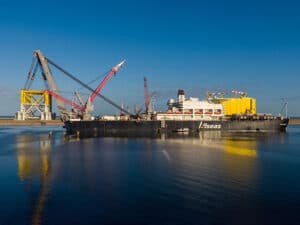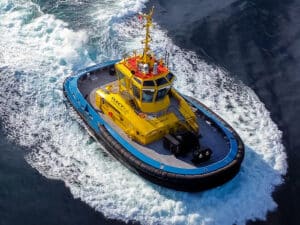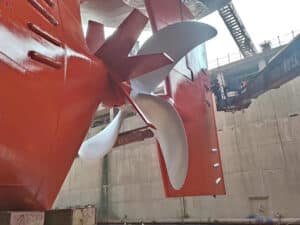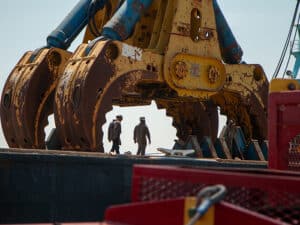
VIDEO: Key Bridge response, what’s new?
Written by Nick Blenkey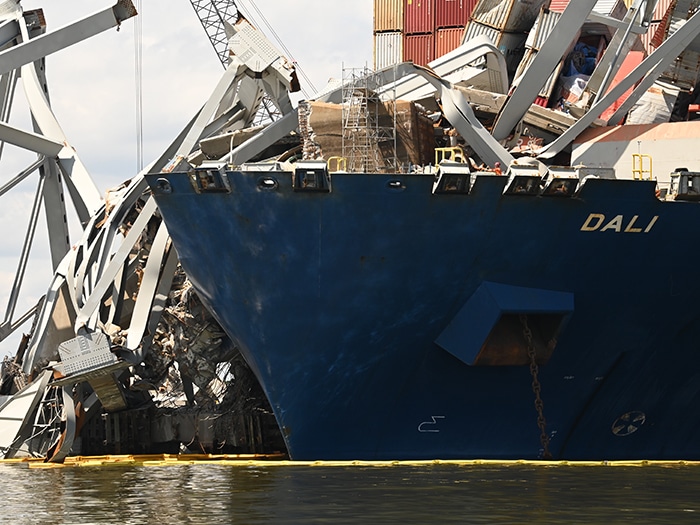
Key Bridge Response 2024 Unified Command photo by Coast Guard Petty Officer First Class Lauren Steenson
As the Key Bridge response Unified Command continues efforts to reopen access to the Port of Baltimore, the NTSB continues its investigation into what went wrong on board the containership Dali before it smashed into the Francis Scott Key Bridge, causing it to collapse. At a Senate hearing on her renomination, National Transportation Safety Board chair Jennifer Homendy said Wednesday that investigators believe that there is a connection between the lights going out on the ship, as seen in videos recorded just before the crash, and the strike on the Key Bridge.
She said that investigators are working with the vessel’s builder, Hyundai, to examine the ship’s electrical power system and that Hyundai had sent experts to the United States to download electrical data from the ship and look at its circuit breakers.
“Of course, that’s preliminary,” Homendy said. “It could take different roads, different paths as we continue this investigation. It’s very early.”
With fuel contamination having caused engine failures on ships in past incidents, fuel from the ship is being tested to see if that was a factor, Homendy told reporters following the hearing.
NTSB investigators remain on the scene and Homendy said she did not expect a preliminary report on the incident to be issued until the first week of May.
REMOVAL OF CONTAINERS CONTINUES
In its most recent update, the Key Bridge response Unified Command says that it continues to remove containers from the Dali and clear bridge wreckage at the Key Bridge incident site. Salvors are removing the containers as part of the effort to gain access to the portion of the Key Bridge that lies atop it and, as of April 11, approximately 38 boxes had been removed. The removal of these containers is a critical step required to safely move the Dali and eventually fully re-open the Fort McHenry Channel, says the Unified Command. Removing containers allows for safe access to, and then the removal of the pieces of the Key Bridge that lie across the ship’s bow, taking weight off the ship and ultimately enabling the ship’s movement.
In parallel, wreckage and debris removal continued at the site, including breaking up of submerged roadbed from span 19, and the removal of a section of span 17 of the bridge. The rubble and debris have been taken to Sparrows Point, Md, for processing and recycling. While marine traffic is still limited, 69 vessels have transited through since the creation of the temporary alternate channels.
“There has been incredible progress this week towards our goal to open the limited access deep draft channel,” said Col. Estee Pinchasin, commander, U. S. Army Corps of Engineers, Baltimore District, Key Bridge Response Unified Command. “Our amazing team of local, state, federal and community responders remain focused on the safe and efficient removal of debris and wreckage from the federal channel and waterway.”
A newly released USACE animation takes a look at the Key Bridge Salvage Operations Plan, including efforts to establish a limited access channel to the Port of Baltimore as, step by step, the Unified Command works to restore full service to the port.

